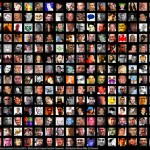 The other day at work, I was talking to one of my supervisors about my work concerning social media, and she made an interesting comment that has really stuck with me. “Well, there is no one way anymore,” she told me.
The other day at work, I was talking to one of my supervisors about my work concerning social media, and she made an interesting comment that has really stuck with me. “Well, there is no one way anymore,” she told me.
Of course, we can debate the question of whether or not there ever was “one way.” But whatever side we happen to fall on, I think that this observation still has relevance. People seek out information in a wide variety of ways, and so, as librarians we need to disseminate information, whether it’s our latest programs or answers to reference questions, in multiple mediums in order to reach the largest number of users possible.
Of course, this can be very frustrating. The greater number of tools we need to use in order to reach our users, the more time it takes, and the more futile it can feel. However, this multiplicity can also be empowering, allowing us to reach more people, and in some cases, actually saving time. A few days after the conversation I had, I came across this article by Nicole Engard. In it, she describes a panel she was a part of concerning Smart Technologies. One of the speakers, Chad Boeninger, talked about using new tools to reach many people instead of just one when answering reference questions.
For example, if someone asks a question which other users might also want to know about, librarians can create a blog post or even a video (I got to use Camtasia recently and loved it. Would love to use this at work). Doing this creates the opportunity that this information will be shared more widely and even re-posted or shared in other forums.
Of course, this has its limitations – although you can certainly point patrons to a blog or online video, this isn’t the right strategy in every case. But after reading Nicole’s article, I started thinking about other ways in which social media tools can help librarians collaborate to answer reference questions more efficiently by sharing with many instead of just one. One thing I’ve been trying to improve on lately is my reader’s advisory skills, and I discovered ATN Reading Lists, a wiki where librarians collaborate to create reading lists and lists of read-alikes. I’ve also utilized my own social networks (a form of crowdsourcing, I guess) to seek information, and Twitter could also be used for this purpose.
When used appropriately, I think social media has the potential to be an important part of reference services (not a replacement for traditional services, but an addition to them). There may be no one way to provide reference information, but social media tools can certainly change some of the ways in which we share information, and even make sharing easier.
For others out there providing reference services, has social media influenced this process for you?
Image: “Put your hand up if you are having a good time.” Flickr. Web. 15 November 2009.
<http://farm2.static.flickr.com/1019/564570276_65929f5968.jpg>.




